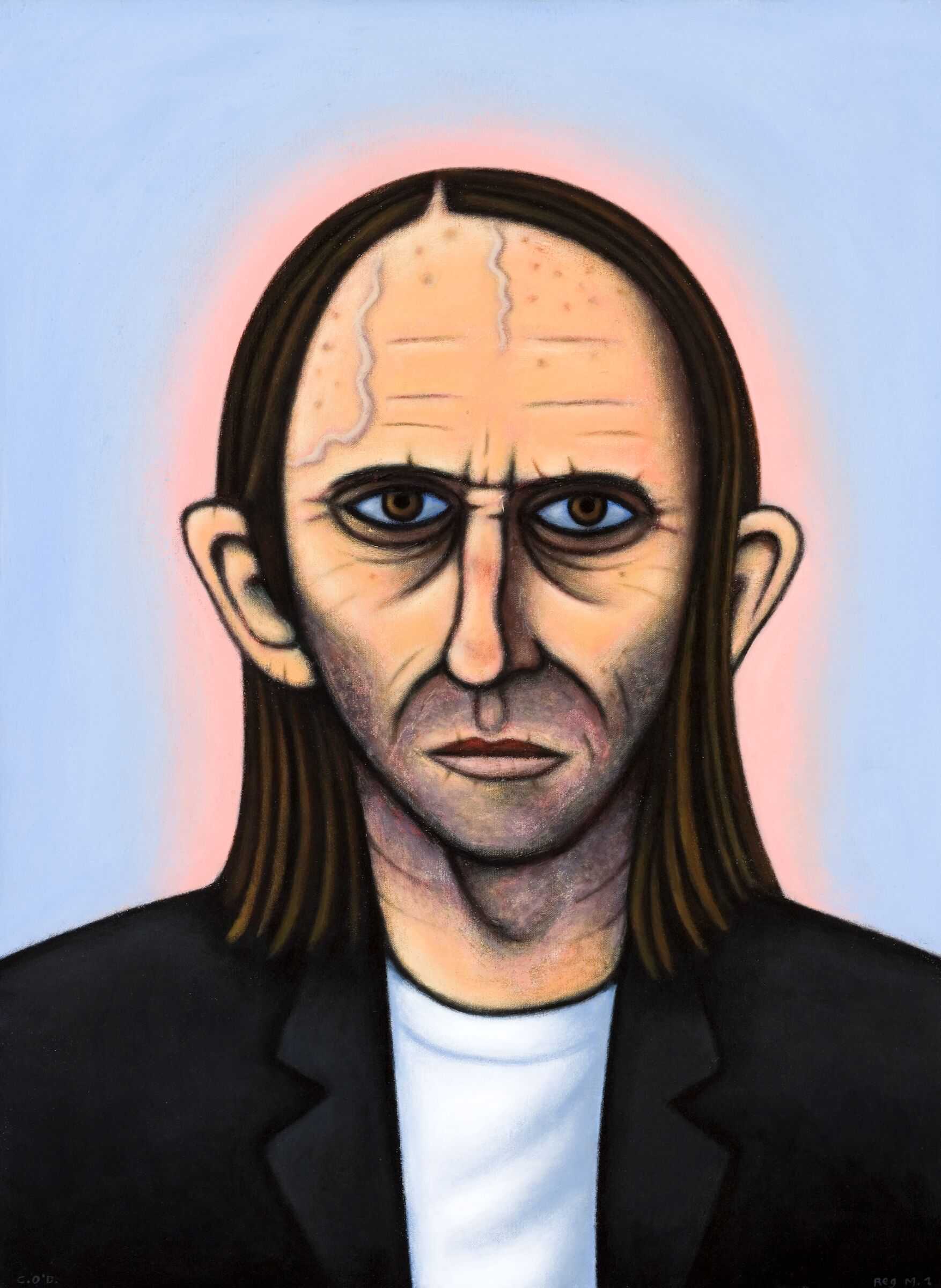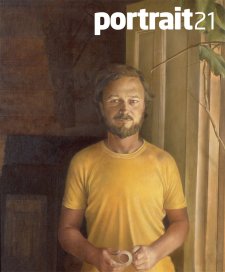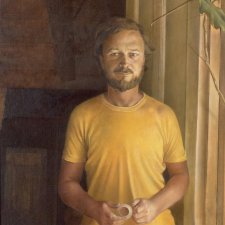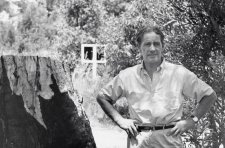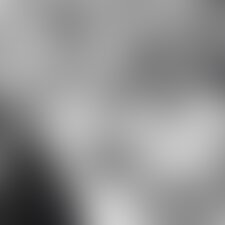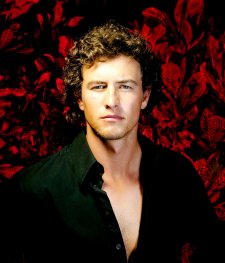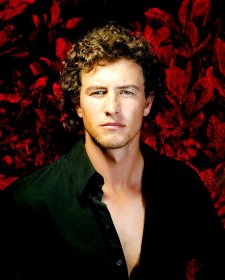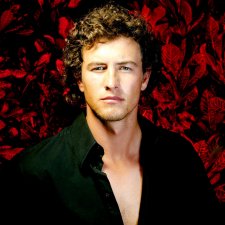For a bloke who doesn't consider himself much of a portraitist, Chris O'Doherty, also known as Reg Mombassa, paints a lot of self portraits.
From photo realist inspired images of himself as a kid that fondly reminisce about growing up in Auckland’s fringe suburbs, to the hostile and bold self portrait entered in this year’s Archibald Prize, the genre has remained consistent in his art practice.
On one occasion he inserted his profile onto a bronze medallion, a format traditionally reserved for Roman rulers and favoured by humanists of the Italian Renaissance. The guitar and pencil signify his two intertwining career paths, as a musician with Mental As Anything and Dog Trumpet, and as an artist and a freelance designer with leisurewear company Mambo Graphics Pty Ltd.
The self portrait is indicative of Mombassa’s renowned, idiosyncratic style that gleefully mixes pop culture references with high art sensibilities. Clearly, he likes to have a bit of fun, which helps to explain the origin of the moniker the public have come to know him by. His band mates liked to make ridiculous names for each other, hence the combination of Reg, a truck drivers’ name and Mombassa [sic], an exotic African location. By chance this name stuck and it is preferable perhaps to the previous one of Dorky Bladder. His names are not used to distinguish between his popular work with Mambo and lesser known landscapes that he has exhibited regularly at Watters Gallery, Sydney since 1975.
His paintings, drawings and prints are of atmospheric landscapes, often featuring houses in idyllic urban rural locations and cars navigating highways through a shroud of mist. These are evocative and peaceful scenes that also observe the conditions of nature – sunlight, shadows, clouds and wind. Poplars and pines wave in a quiet energy of their own and the use of hand drawn borders further imbue the works with an organic quality. They bring to mind the quiet beauty of Clarice Beckett’s paintings, although Mombassa also cites John Glover’s colonial landscapes and John Constable’s countryside sketches as influences. Mombassa regularly portrays the east coast of Australia, but also depicts scenes from his native New Zealand. He appreciates the early landscapes of Colin McCahon, a fellow ‘nutty New Zealander’, who Mombassa considers ‘really nailed particular aspects of the landscape; bare, windswept and sheep eroded’.
Born in 1951, Mombassa grew up in the outer suburbs of Auckland where new fibro houses bordered the surrounding scrubland. His father used to build houses and the motif plays a dominant role in Mombassa’s art. He is intrigued by the suburbs, regularly criticised as banal and monotonous. Instead he finds great beauty in the suburbs, particularly late at night when returning home from a gig, believing “the light creates mysteriousness and the houses and gardens become a bit like sculptures or artworks”. Likewise powerlines, pylons and factories have the same aesthetic appeal. So often Mombassa’s images have a travelogue, or postcard quality, indicative of the hours spent travelling in a car as a musician. Mental As Anything formed in 1976 whilst Mombassa (guitar, vocals), Martin Plaza (guitar, vocals), Andrew ‘Greedy’ Smith (keyboards, harmonica and vocals) and Wayne ‘Bird’ Delisle (drums) were studying at the National Art School, Sydney. They were soon joined by Mombassa’s brother, Peter O’Doherty
(bass, vocals) and took to the stage in 1977, first performing at the art school’s Cell Block Theatre. They then landed a regular gig at the Unicorn Hotel, Paddington, using the pool able as a stage. The group rapidly gained popularity with their energetic blend of rock, pop, country and rockabilly that resonated with audiences at suburban beer barns across the nation. The 1979 classic drinking track ‘The Nips Are Getting Bigger’ was a massive success, backed up a host of songs about grog, romance and general good times.
The band took their witty brand of Australian garage rock to the international stage, touring New Zealand, Canada, the USA, the UK and Europe. The 1985 Australian #1 single ‘Live It Up’ evolved out of a 1983 Canadian tour, while attempting to avoid the depths of boredom. Greedy, who penned the track has stated: “I drifted into the netherworlds of hell – the nightclub. Two years later the song was finished”. Appreciative fans clearly identified with the song and it sold 200,000 copies globally. The Mentals international success has been underpinned by a consistent Australian following, with the group achieving more Top 40 singles than any other Australian band.
Mental As Anything has undergone line up changes in recent years with members pursuing other musical projects. Mombassa teamed up with his brother Peter to form Dog Trumpet and to date they have released three albums.
However, over nearly three decades, Mental As Anything have released fifteen albums with sales exceeding two million copies world wide. The essence of Mental As Anything is encapsulated in Paul Worstead’s iconic posters that were used to promote the release of the albums Get Wet (1979), Creatures of Leisure (1983), and Garage (1997). Impulsive, fun and bold, they are cheeky portraits of a group of musicians who happily claim to be “relatively lazy and only mildly ambitious”. Yet the Mentals concurrently engaged in their art practices, using their work on album covers and holding three successful group art exhibitions in 1983, 1997 and 2000. It was through his cover art with Mental As Anything that Mombassa caught the attention of entrepreneur and creator of Mambo Graphics Pty Ltd, Dare Jennings. In 1986 Mombassa began providing graphics for Mambo, an internationally successful clothing company with a fetish for parodying Australian culture through word play and visual puns. Understandably Mombassa, an advocate for the ‘aristocracy of the normal’ fit right in and his irreverent graphics have become synonymous with Mambo. His contribution is a whimsical play with post modernity where he enjoys the freedom to leisurely exploit the histories of Western art, take leave from Dada and Surrealist tendencies and fuse these with a sharp analysis of Australian politics and culture. Or in Mombassa’s words it is ‘the sublime and the ridiculous’.
He has created several iconic characters, notably Space Monster, Violent Hen, Beer Monster, Hairy Dog Trumpets and the controversial three eyed Australian Jesus. These characters parade through cartoon-like landscapes and suburban wastelands littered with winged fibro houses, car skulls, space crafts, powerlines, billowing factories and tree stumps that literally have the guts of the earth spewing out of them. The popularity of these characters was confirmed when several featured in the closing ceremony of the Sydney 2000 Olympic Games. Mombassa also participated in the design of the athlete’s uniforms with the work Bush Suburbs lining the team blazer. This image was later converted into the woven format by the Victorian Tapestry Workshop.
Mombassa’s work has never failed to shock, or provoke. Jennings has described him as ‘puerilely intelligent’ and this is easily confirmed by his array of vivid images and text that provide ‘instructions for sexual congress’, or depict ‘the origin of crude sexual terms’. Mombassa also applies his blunt approach to highly politicised issues. The 2002 poster and t-shirt Mr and Mrs Sydney would prefer not to have a nuclear reactor situated halfway up their arse fuelled intense debate over the sensitive topic. He received strong criticism for the work including a response in Federal Parliament as well as passionate letters to the editor in Sydney’s newspapers. The t-shirt sold well however, with proceeds of the sale donated to Reactor, the anti-reactor campaign. Often it is Federal Government policies that Mombassa is responding to. The treatment of asylum seekers is addressed in the 2003 work Australian Jesus welcomes the boat people and he has recently alluded to Industrial Relations changes.
This confusion and frustration with current day state of affairs seems to be condensed into the strikingly honest Self portrait with spots and veins. Mombassa’s stare is piercing and intense, yet vulnerable and questioning. Indeed it is quite difficult to pigeonhole him as a politicised Pop Surrealist. His art and music evade neat classifications that potentially could underestimate the sincerity of his artistic practice. His work is regularly an aesthetic and personal response to the suburbs and landscape around him. It is whimsical, fun, tongue in cheek, candid and abrupt, but also consistently underpinned by a deep integrity.
